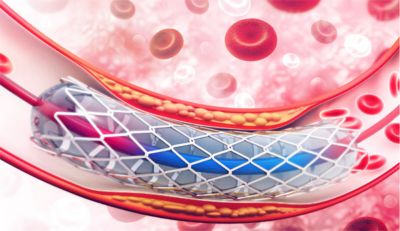-
-
Access Free Student Software
Ansys empowers the next generation of engineers
Students get free access to world-class simulation software.
-
Connect with Ansys Now!
Design your future
Connect with Ansys to explore how simulation can power your next breakthrough.
Countries & Regions
Free Trials
Products & Services
Learn
About
Back
Products & Services
Back
Learn
Ansys empowers the next generation of engineers
Students get free access to world-class simulation software.
Back
About
Design your future
Connect with Ansys to explore how simulation can power your next breakthrough.
Free Trials
ANSYS BLOG
September 4, 2020
Virtual Learning Democratizes Simulation for Engineers
Long before COVID-19 forced many educators and students online, Dr. Rajesh Bhaskaran was focused on bringing simulation education to as many people as possible via virtual learning. Bhaskaran is Swanson Director of Engineering Simulation at Cornell University’s Sibley School of Mechanical and Aerospace Engineering. He has developed a methodology for using simulation in different courses, and a few of his SimCafe online courses are among those featured in the new Ansys Innovation Courses. We caught up with him to ask about how simulation is being taught to engineering students.
Q: Why is it important for students to use simulation software?
A: It's because simulation can act as a bridge between theory and applications. It is the bridge. If you want to know how your structure will behave, you build a mathematical model. But you can't solve the mathematical model by hand in most practical applications. You need simulation software to solve it. With simulation, you don't need to be sophisticated in math or physics to solve complex mathematical models. You need to understand the model and the numerical strategy used to solve it at a conceptual level. Simulation software takes care of the details and you can focus on the big picture.
Q: But those details are important to know, right?
A: Some are, and simulation software can be used to understand them. Now that we have a simulation tool, we’re not restricted to solving heat transfer in a rectangle – that’s a piece of cake. Now students can solve heat transfer in an electronic chip while also learning about the numerical strategy used by the simulation tool to solve the math model. What are the errors introduced and how can we minimize those errors?
Dr. Rajesh Bhaskaran
We can also verify simulation results by doing sanity checks through back-of-the-envelope type calculations. Simulation can be used as a learning tool to perform “what-if” studies and to analyze the performance of a design or product.
Before getting into any simulation, I take students through a “pre-analysis” step. We look at things like what is the mathematical model, what are the physical principles and assumptions contained in the model, what are the expected results? Then we get into the simulation tool, set up the model and solve it numerically on a mesh. Once we have the results, we get this rich, visual information that we can interrogate. Students can see the flow over a car or how a structure is deforming. Visualization is another key aspect of simulation that is very helpful for learning.
Simulation is a great learning platform. It’s a great way to learn physics and the underlying theory.
Q: How does online learning promote more widespread use of simulation?
A: For democratization of simulation to happen, education and training have a key role. Both simulation and virtual learning are disruptive technologies.
It's like a paradigm shift to combine simulation with online learning. It's scalable because it's online. The next-generation engineering curriculum is where simulation becomes a standard for teaching physics. Every engineering student coming out of a program should be able to use simulation software effectively.
One of Dr. Bhaskaran's Innovation Courses takes students step-by-step through a balloon-expandable stent simulation.
Q: Can you give us an overview of your teaching methodology?
A: It’s similar to mass customization in manufacturing. The way I think about it is online learning brings a cinematic mode to teaching. To the student, it appears as if the professor is talking directly to her/him one-on-one.
Students can review the lesson at their own place. I record videos – not as a “sage on the stage” in front of people. I record the lesson as if I were in office hours, demonstrating to the student how the process works. For the student, it seems more like a “guide on the side.”
We split the simulation exercise into short videos, most of which are followed by “check your understanding” questions. To move information from short-term to long-term memory, we have to apply it. A “check your understanding” question helps students to apply the knowledge in the preceding video and get immediate feedback.
The online videos can be helpful in flipping the classroom. For instance, an online learning module would show students how to use Ansys software to solve a particular beam problem. I'm guiding them through it, but they can do it at home at their own pace. The “homework” involves solving a different problem by adapting the procedure in the online module. That can be done in the classroom, where the instructor is available to answer questions as students are applying their knowledge to a new problem.
Another of Dr. Bjaskaran's Innovation Courses explains how to model 3D internal bloodflow in a bifurcating artery.
Students, educators and engineers who would like additional training can get hands-on with virtual learning with our Ansys Innovation Courses. For example, check out Dr. Bhaskaran’s 3D Bifurcating Artery Fluids course and his Cardiovascular Stent Structures course. These medical-focused courses are an example of how virtual learning can democratize simulation by expanding its use deeper into specific industries, such as healthcare.
Check out all of the Ansys Innovation Courses for free, online learning on demand.


